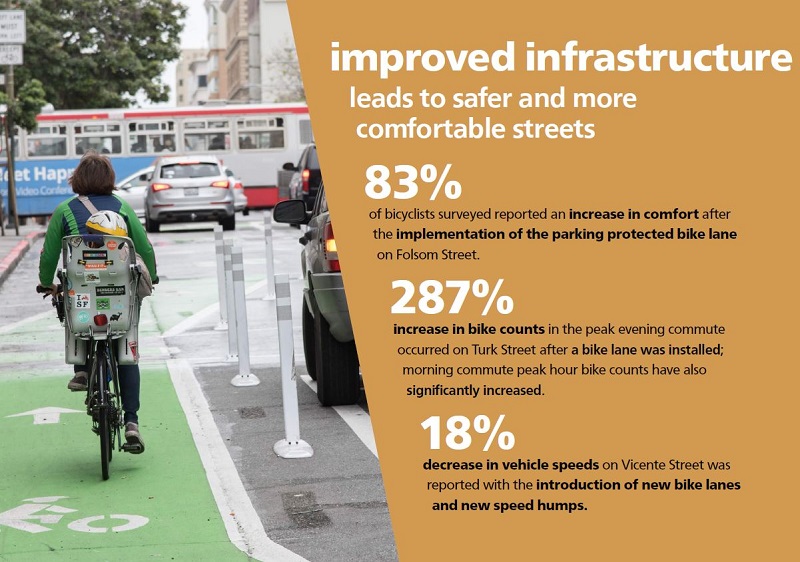
In 2018, the SFMTA installed over nine miles of bike lanes, including a record 5.5 miles of new protected bike lanes, as well as pedestrian improvements along many major corridors. The mileage is important, but what is even more important is how these projects affect people’s travel experiences. To understand this, over the last year we have evaluated 15 individual projects and a few city-wide safety treatments.
So how are we doing? Results show that the SFMTA’s investments create positive impacts across many metrics. In areas where we have installed street design changes, vehicles are traveling at slower speeds, more people are walking and biking and users of the new safety improvements are reporting a general increase in comfort. Detailed findings are summarized in the Safe Streets Evaluation Program’s year-end report, Reporting the Results.

Although a lot has been done to increase safety for all road users in 2018, more is needed to advance the city’s goal of Vision Zero, which is the city’s commitment to ending traffic fatalities.
Over the next year, the Safe Streets Evaluation Program will continue to evaluate key complete street projects including improvements on Masonic, Polk, Howard, Townsend and Valencia Streets. We will also evaluate new localized treatments such as flashing yellow left-turn arrows and continue to see how existing city-wide safety upgrades are performing, including Rectangular Rapid Flashing Beacons (RRFBs) and fully separated bike signals.
We will be posting about ongoing successes and lessons learned in our quarterly blog post, the Safe Streets Segment. Stay tuned for more in 2019!